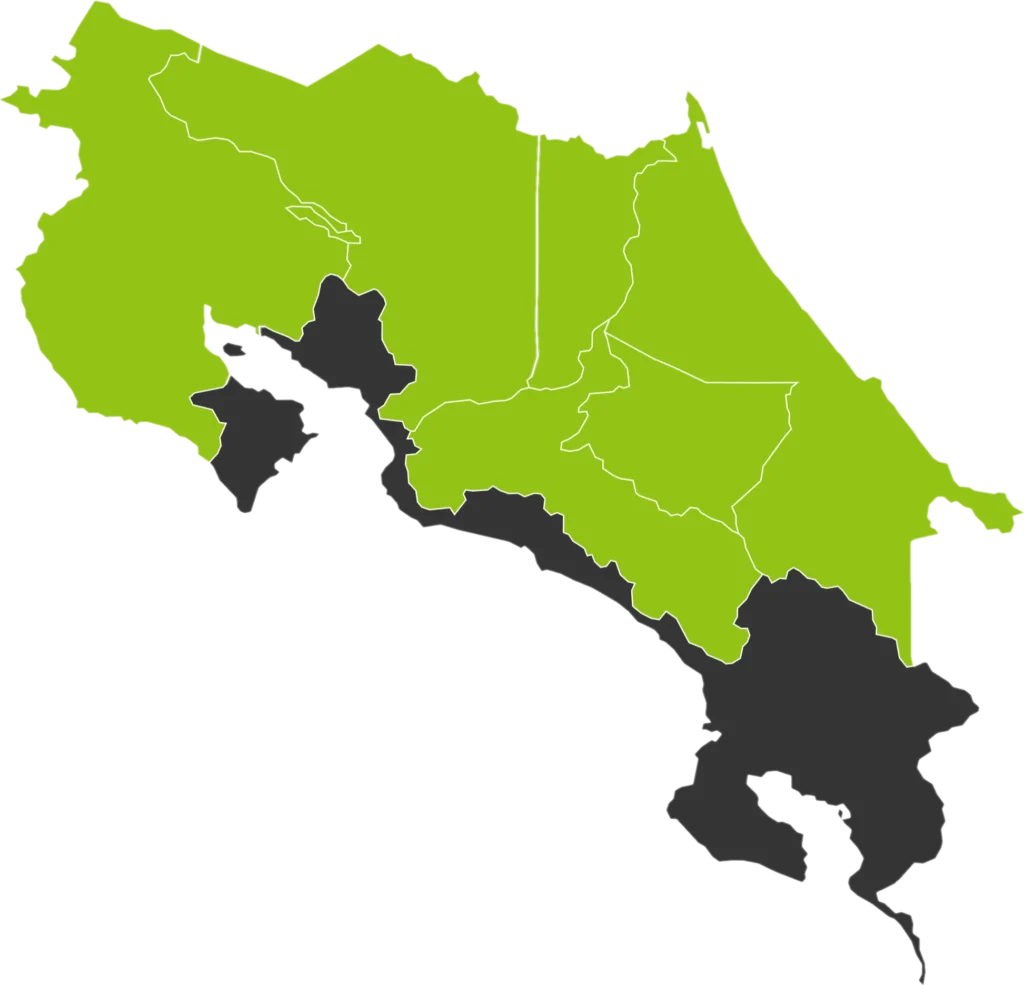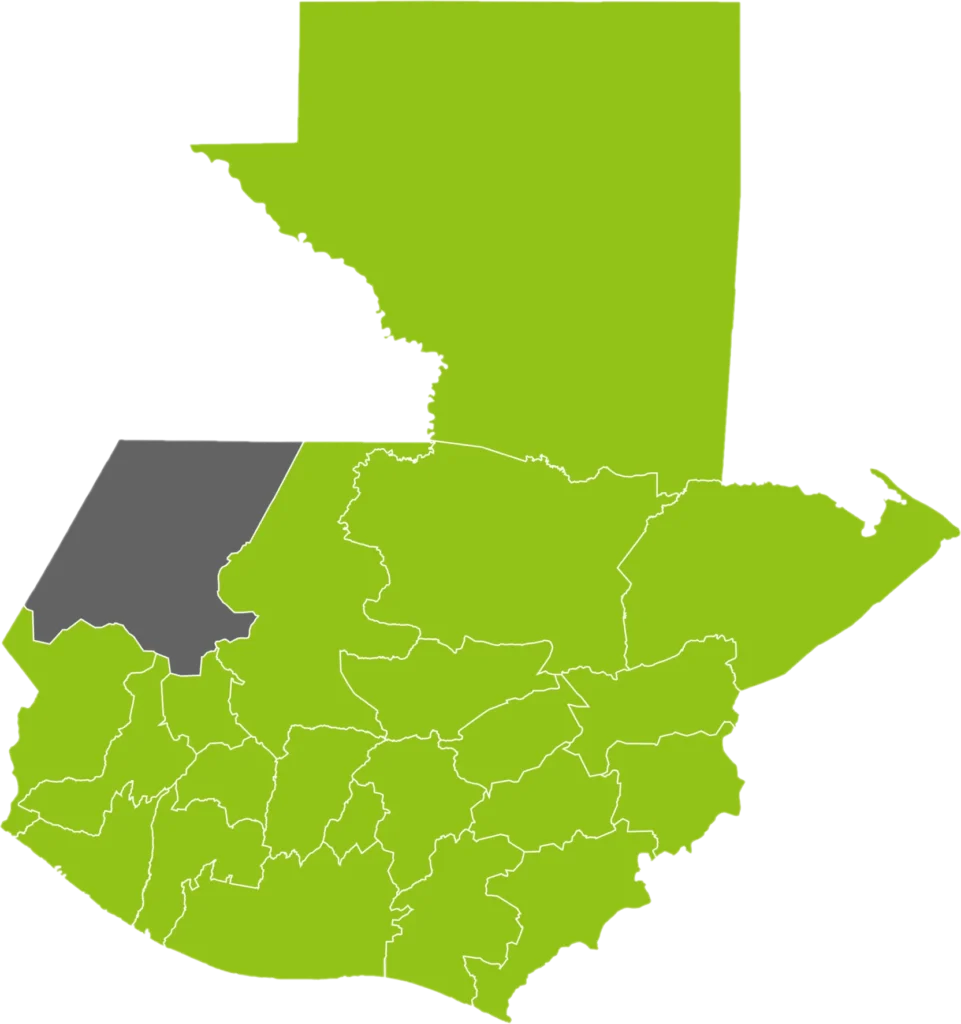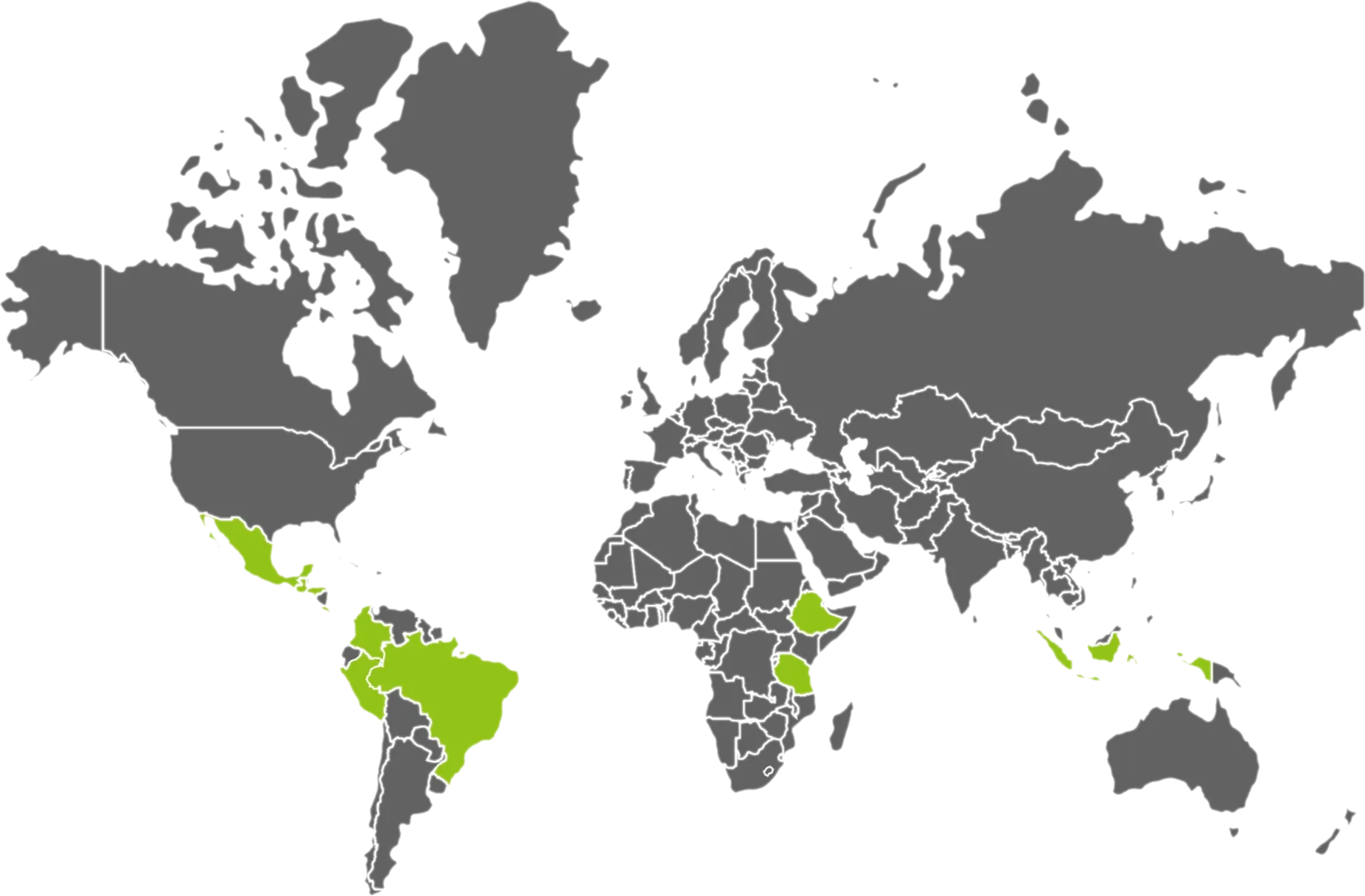OUR FARMERS
BRAZIL
Natural
Grade SSFC/17/18
- SUL DE MINAS
- 950 - 1,100M
- NATURAL
- MUNDO NOVO, CATUAI, ICATU Bourbon
- Brazil, known as the coffee pot of the world, is the largest coffee producing nation, growing approximately one-third of the world’s coffee.
- Brazil also grows 80% of the world’s Arabica beans.
- The home of the largest coffee estates and the most cooperatives in Brazil, the region of Sul de Minas, produces the top cupping Brazilian coffee.
- Gentle rainfall on the region’s rolling hills combines with a mild climate to produce the best coffee beans.
- More than half of these farms are small to medium sized (10-150 hectares) and may have been farming coffee for generations.

CUPPING NOTES: Mild Acidity, Medium Body, Chocolate, Lemongrass, Roasted Almonds, Clean and Sweet.
COLOMBIA

CUPPING NOTES: Medium Acidity, Smooth Round Body. Dark Chocolate, Mango, Peach, Nice Complexity.
- TOLIMA
- CAFE DEL MACIZO
- 1,500- 2,100M
- WASHED & SUN DRIED
- CATURRA, CASTILLO, TIPICA
- EP, ORGANIC
- DECEMBER TO APRIL
- A small group of farmers formed Cafe del Macizo in 2003 in the countryside municipality of Planadas, in the state of Tolima.
- With 59 lifetime growers, the group shares decades of knowledge and resources with each other to product high quality coffee.
- Located in the foothills of Cordillera Central, the beautiful mountains shape the lush landscape.
COSTA RICA
SHB EP
- BRUNCA
- COOPE AGRI
- 1,100 - 1,600M
- FULLY WASHED
- CATURRA CATUAI
- DECEMBER TO FEBRUARY
- Costa Rica means “Rich Coast” and was the first coffee growing Central American nation.
- The country’s tallest mountain, Cerro Chirrippo, contributes to the area’s irregular topography.
- The mountain borders the Perez Zeledon area to the northwest with the border of Panama to the southeast.
- When combined with the diverse ecosystem and plentiful rivers, an ideal growing environment is created.
- Nearly 10% of Costa Rica’s population is involved in coffee production, which makes up 90% of the country’s produce.
- This includes 80,000 small scale coffee farmers which have provided to the economic development and culture of values in the region.

GUATEMALA

CUPPING NOTES: Green Apple, Lemon, Milk Chocolate, Nougat, Roasted Almond, Toffee, and Vanilla.
- HUEHUETENANGO
- SINGLE ESTATE
- Mario Roberto Sosa was born in 1927 and began working at the age of 12.
- When he was 20, he purchased a truck and started a local transportation business before marrying Raquel Lopez and raising 7 sons.
- Mario and Raquel began growing coffee in 1966 and in 1972 established Los Laureles II.
- They planted the farm with traditional cultivars for the area- Pache, Caturra, and Bourbon.
- Maragogype and Gesha were added and most recently, Anacafe and Marsellesa have been planted alongside avocado.
- These crops have unique flavor and characteristics which means a more diverse range of buyers interested in the coffee.
- At 95, Mario is still very much on the farm, supervising the care of the trees and the harvest with the support of his sons.
ETHIOPIA
ORGANIC SDAMO GR.3
- OROMIA COFFEE FARMERS COOPERATIVE UNION (OCFCU)
- 1,100 - 2,500M
- FULL NATURAL, SUN DRIED ON RAISED BEDS
- ETHIOPIAN HEIRLOOM
- ORGANIC
- NOVEMBER TO MARCH
- It is thought that the coffee plant was discovered in Ethiopia, where coffee is more than an income producing crop and is part of a long lasting culture.
- Coffee is Ethiopia’s main export commodity, contributing to the livelihoods of more then 15 million farmers and sector workers.
- OCFCU is a democratic farmer owner coop that is over 20 years old that works exclusively in the Oromia Regional State.
- This region is more than 65% of the country’s coffee growing land.
- The members operate under the principles of the International Cooperative Alliance and Fair Trade.
- Member farmers process and supply high quality organic Arabica coffee for direct export.

CUPPING NOTES: Bright Acidity, Medium Body, Black Tea, Cardamom, Molasses, Lingering Finish.
BALI

CUPPING NOTES: Dark Chocolate, Brown Sugar, Nutty with Fruit undertones.
- KINTAMANI HIGHLANDS OF CENTRAL BALI
- PRODUCERS ORGANIZED THROUGH SA A TRADITIONAL FARMER ORGANIZATION IN UPLAND BALI
- 1,200 - 1,600M
- HAND-PICKED, WET-HULLED, TWO-STEP SUND DRYING ON RAISED BEDS
- BOURBON, (S705 & USDA 762( TYPICA, and CATIMOR
- ORGANIC
- VOLCANIC LOAM
- Sourced from family owned farms located in the Kintamani highlands on the island province of Bali, Indonesia.
- Coffee is grown in the volcanic soils of Mount Agung along with citrus trees that provide shade and another source of income.
- Coffee production is typically organized around a Subak Abian, which refers to the ecologically sustainable irrigation systems developed more than 1,000 years ago by Hindu priest who practice Tri Hita Karana (the three sources of prosperity), a philosophy focused on the harmonization between the environment, humans and God
TANZANIA
PEABERRY
- MOUNT KILIMANJARO
- KILIMANJARO PLANTATION ESTATE
- 1,200 - 2,000M
- FULLY WASHED & SUN DRIED
- KENT AND BOURBON
- SEPTEMBER TO JANUARY
- This uniquely fertile area surrounding Mount Kilimanjaro is some of the best in the world for cultivating Arabica coffee.
- This plantation was planted with 1 million coffee trees between 2000-2005.
- Every coffee tree is connected to a drip irrigation system, which ensures adequate water supply at all times.
- A central wet mill consistently guarantees high quality standards while simultaneously reducing water consumption for the “fully washed” processing.
- Since 2009, Kilimanjaro Plantation has had a drying system with 9 different sized drums, which have a total capacity of 111 m³

CUPPING NOTES: Medium Acidity, Smooth Body, Nougat, Stone Fruit, Black Tea, Lingering Savory
HONDURAS
ORGANIC RFA SHG EP

CUPPING NOTES: Medium acidity, Smooth body, Caramel, Citrus Fruit, Herbal.
- COPAN
- CAFESCOR
- 1,400 - 1,600M
- FULLY WASHED & SUN DRIED
- CATURRA, RED AND YELLOW, CATUAI, BOURBON, LEMPIRA
- ORGANIC
- JANUARY TO APRIL
- Slightly larger than the state of Tennessee, Honduras produces coffee has six main coffee growing regions.
- IN the Casitas district, the COOP CAFESCOR was created by 25 small farmers in 2014 and has grown to over 131 farmers and 400 hectares.
- The COOP has a wet mill in the community of Las Casitas as well as a dry mill in the community of Jimilile.
- Coffee is the main agricultural export crop in the country, over 120,000 farms contribute a third of agricultural GDP.



